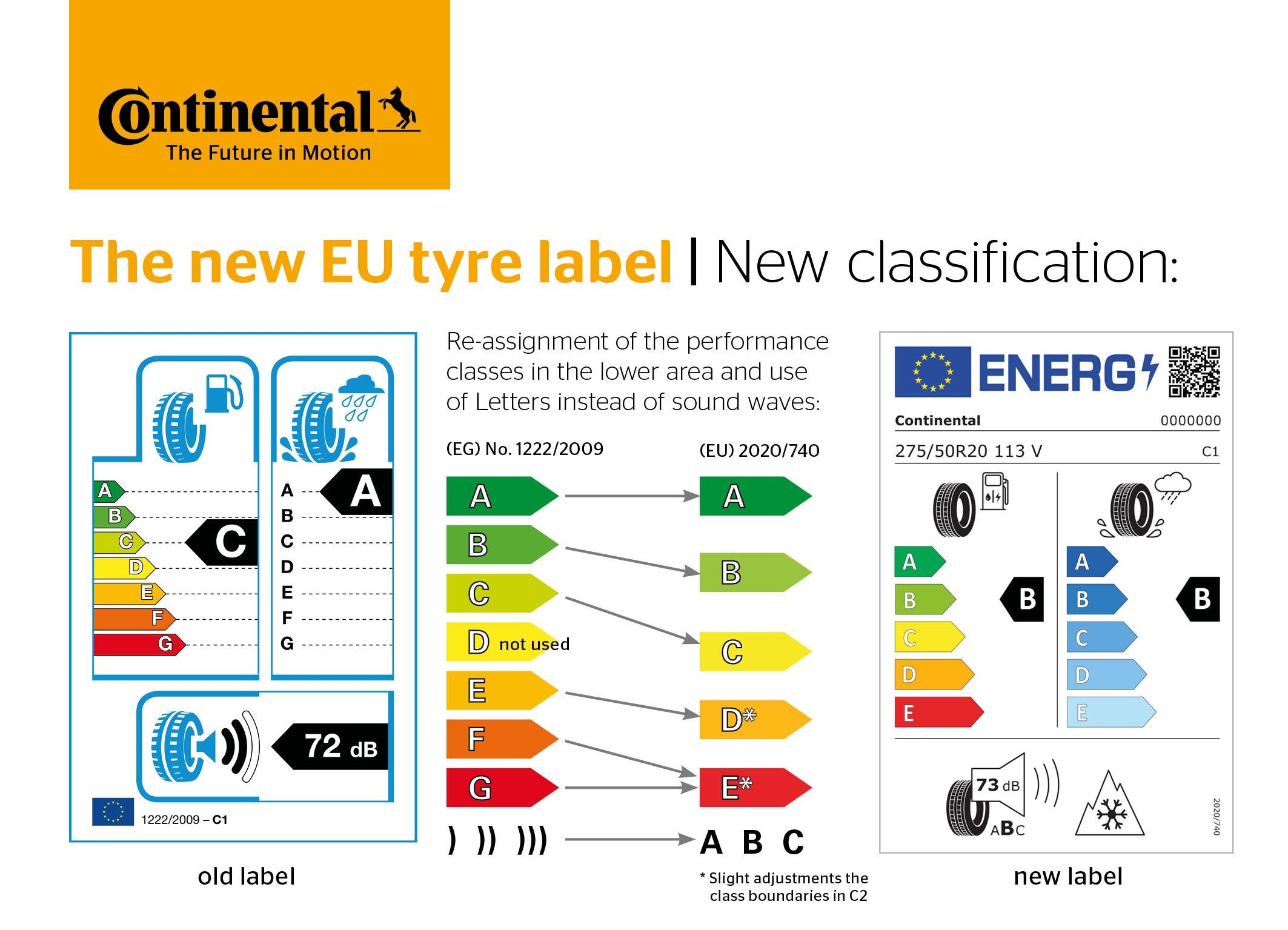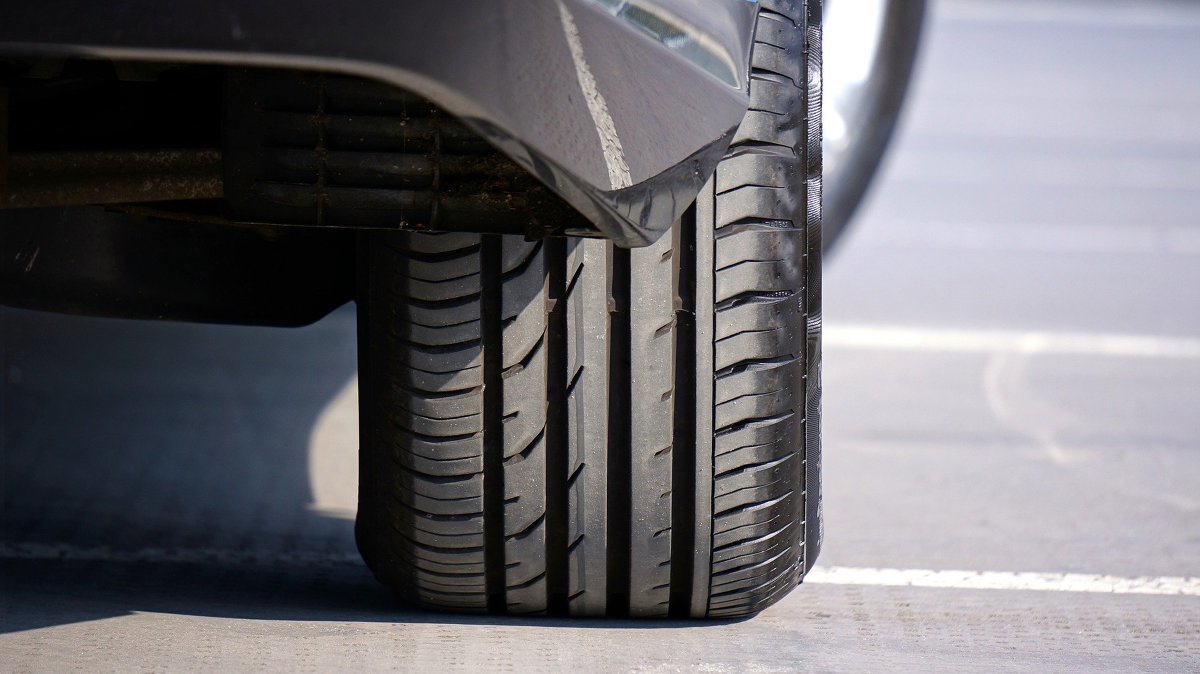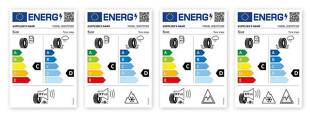
Tires. From May 1, 2021 new labels. What do they mean?
 From May 1, 2021, new European requirements for labels and markings on tires will come into force. Bus and truck tires will also be subject to the new rules.
From May 1, 2021, new European requirements for labels and markings on tires will come into force. Bus and truck tires will also be subject to the new rules.
Tires will no longer be used in F and G classes due to rolling resistance and wet grip, so the new scale only includes 5 classes (A to E). The new energy symbols better show that fuel economy applies to both ICE and electric vehicles. At the bottom, the noise class is always indicated with the value of the external noise level in decibels. According to the new regulation, in addition to the standard label, there will be a badge for grip on icy roads and / or in difficult snow conditions. This gives consumers a total of 4 label options.
– The Energy Efficiency Label provides a clear and generally accepted classification of tire performance in terms of rolling resistance, wet braking and ambient noise. They will help consumers make informed decisions when buying tires, as they are easy to judge by three parameters. These are only selected parameters, one for each in terms of energy efficiency, braking distance and comfort. The conscientious driver when buying tires should also check tire tests of the same or very similar size as the one they are looking for where they will compare
also, among other things: braking distances on dry roads and on snow (in the case of winter or all-season tyres), cornering grip and hydroplaning resistance. Before buying, it is worth talking to a service specialist in a professional tire service, says Piotr Sarnecki, CEO of the Polish Tire Industry Association (PZPO).
See also: Accident or collision. How to behave on the road?
 The new label features the same three classifications as before: fuel efficiency, wet grip and noise levels. However, the wet grip and fuel efficiency class badges have been changed to resemble home appliance labels. The empty classes have been removed and the scale marked A to E. In addition, the decibel-dependent noise class is given in a new way, using the letters A to C.
The new label features the same three classifications as before: fuel efficiency, wet grip and noise levels. However, the wet grip and fuel efficiency class badges have been changed to resemble home appliance labels. The empty classes have been removed and the scale marked A to E. In addition, the decibel-dependent noise class is given in a new way, using the letters A to C.
The new label includes additional pictograms to inform about increased tire grip on snow and/or ice (note: the pictogram regarding ice grip only applies to passenger car tires). They show that the tire can be used in certain winter conditions. The labels may have no markings, depending on the tire model, only snow grip, only ice grip, or both.
– The symbol of grip on ice alone means a tire designed for the Scandinavian and Finnish markets, with a rubber compound even softer than typical winter tires, adapted to very low temperatures and long periods of ice and snow on the roads. Such tires on dry or wet roads at temperatures around 0 degrees C and above (which is often the case in autumn and winter in Central Europe) will show less grip and significantly longer braking distances, increased noise and fuel consumption. Therefore, they cannot replace conventional winter tires and all-season tires designed for our winters,” says Piotr Sarnetsky.
A scannable QR code has also been added to the new labels - for quick access to the European Product Database (EPREL), where a downloadable product information sheet and tire label are available. The scope of the tire label will be expanded to include truck and bus tires, for which until now only label classes have been required to be displayed in marketing and technical promotional materials.
The aim of the changes is to improve the safety, health, economic and environmental efficiency of road transport by providing end users with objective, reliable and comparable information about tires, which allows them to choose tires with higher fuel efficiency, greater road safety and lower noise levels.
New snow and ice grip symbols make it easier for the end user to find and purchase tires specifically designed for regions with severe winter conditions such as Central and Eastern Europe, Nordic countries or mountainous regions.
The updated label also means less environmental impact. It aims to help the end user choose more economical tires and therefore reduce the car's CO2 emissions into the environment. Information on noise levels will help reduce traffic-related noise pollution. By choosing tires of the highest class in terms of energy efficiency, energy consumption will be reduced to 45 TWh per year. This corresponds to a saving of about 15 million tons of CO2 emissions per year. This is an important aspect for everyone. However, this is of even greater importance for EV and PHEV (plug-in hybrid) drivers.
See also: Electric Fiat 500